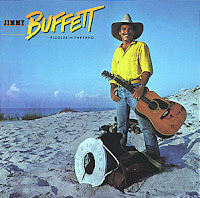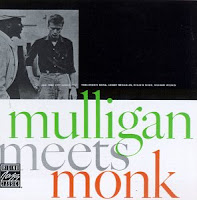Deep Purple Concerto For Group And Orchestra (Vinyl, Harvest Records, 1970) ** Deep Purple In Rock (CD, Harvest Records, 1970) ****
Deep Purple Fireball (CD, Harvest Records, 1971) **
Deep Purple Machine Head (Vinyl and CD, Purple Records, 1972) *****
Deep Purple Made In Japan (Vinyl and CD, Harvest Records, 1972) *****
Deep Purple Live In Japan (3CD, Purple Records, 1972) ***
Deep Purple In Concert (Vinyl, Harvest Records, 1980) ***
Deep Purple In Concert '72 (CD, Warner Brothers Records, 2012) ***
Deep Purple Who Do You Think We Are (CD, Purple Records, 1973) **
Deep Purple Perfect Strangers (CD, Polydor Records, 1984) ***
Deep Purple House Of Blue Light (CD, Polydor Records, 1987) **
Deep Purple In The Absence of Pink - Knebworth 85 (CD, Connoisseur Collection, 1991) ***
Deep Purple The Battle Rages On (CD, RCA Records, 1993) **
Genre: Rock
Places I remember: Little Red Bookstore (Concerto); CD re-releases of In Rock/ Fireball/ Machine Head/ Made In Japan/ Who Do You Think We Are from Virgin Megastores; vinyl Machine Head from Taste Records; Made in Japan from David Jones department store (Sydney); rest from JB Hi Fi or The Warehouse.
Fab, and all the other pimply hyperboles: Highway Star (either studio or live - Machine Head or Made In Japan)
Gear costume: Demon's Eye (Fireball); Speed King (In Rock)
Active compensatory factors: I will need to break up the Deep Purple catalogue into the various line-ups (i.e. Deep Purple Mark 2 etc), because I own a lot of their albums.
Ha ha! Having said that I don't have any of the albums created by the original Mark 1 version.
Instead, we jump straight into Mark II - Roger Glover/Ian Gillan have joined Jon Lord, Ritchie Blackmore, Ian Paice.
Things got off to a weird start with the Concerto For Group And Orchestra created and driven by Jon Lord.
It sounds...different. I had started my Deep Purple love affair with Deep Purple In Rock, so, in the early seventies, I had no inclination to return to a record with an orchestra on it!
Fast forward to 2023 and I found a mint copy. My boyhood decisions, I've found over the years, were usually pretty spot on. Because I had very limited means of buying records I was very discerning.
It's a curious work in many ways. I'm sure Ritchie did this music through gritted teeth. Suffice to say, I still struggle to listen to the album with any enthusiasm.
Deep Purple In Rock had me from the opening seconds of the first track - Speed King, and didn't let me go.
My memories of the album are firmly tied up with a visit to a classmate's house in 1973. Brian Wood and I were both in Senior 5 at Mt Albert Grammar. He lived in Kerr Taylor Ave - which was on my walking route to get the bus back to Royal Oak.
One day I stopped off at his and we played the In Rock album. While we were listening to it my mum rang the Woods' place and told me she'd pick me up to have a look at a new section she and dad had bought in Ramelton Road, Mt Roskill. All of that is very vivid in my brain still. It was a happy time!
The music is so radically different to the Concerto, it's a real shock that both albums came out in 1970. Ian Gillan is now a powerful presence where he was very much on the periphery for Concerto.
The highlights are plenty - Child In Time is a very confident statement in itself but the rest of the album is chock full of great songs and performances.
In comparison Fireball has a few great tracks but some meh ones as well. It's a pretty messy affair with some shockers (i.e. Anyone's Daughter) and loose jams masquerading as songs (everything else except for No No No and Demon's Eye - the one true classic Purple song on this runt of an album).
Machine Head is the classic Mark 2 album, forged out of adversity (Smoke On The Water, famously tells the tale of the album's inception).
Every song is an inspired piece of brilliance in sharp contrast to Fireball. I can remember buying the album from a record shop off Queen St in Auckland's CBD and thinking I was the cat's pajamas.
It sounded impossibly good to my teenage ears and I spent hours listening to it and poring over the lyric sheet and the cover. A seminal experience.
When my family went on a holiday to Sydney, Deep Purple's Made In Japan was central to my list. Here was another album I dissected groove by groove. Air guitaring to Ritchie on Smoke On The Water never gets old. I did it today when I relistened to the album.
The 3 CD Live In Japan set documents all of the live shows that contributed to Made In Japan: Osaka's two nights, and Tokyo. One for completists that one. In my opinion - less is more and the double vinyl original LP had enough to deal with. I'm not a fan of the extended CD version with a second CD of encores and the triple CD collection is nice to have (I HAD to have it) but hardly essential.
The In Concert double album collects the BBC in concert recordings made by the band. Compared to Made In Japan the recording doesn't pop in the same way and the performances (aside from Lazy) don't equal up either. Still good, but not great!
It was re-released in 2012 as a more palatable single CD with a bonus of Maybe I'm A Leo at soundcheck. It makes better sense with Mike's idiosyncratic introductions as well.
On to 1973 and tensions were starting to reveal themselves in the music with Who Do You Think We Are (no question mark).
Sadly, it's a case of Fireball Part 2 with some icky moments (Mary Long), some greatness (My Woman From Tokyo) and a few interesting jam/doodles - best of which is Rat Bat Blue.
And then, that was it for Mark 2 Purple until Mark 3 and 4 had done their thing and time had gone by until Mark 2 reunited in 1984!
The result of the reformation was Perfect Strangers. It's a strong album in many ways but in others it doesn't quite work. As Roger Glover has said, "A great moment in time but, as an album, it doesn't quite hang together."
Although recognisably DP, the sound is not really like In Rock or Machine Head; it's not even like Who Do we Think We Are, instead it's a progression for the eighties into some symphonic rock along the lines of Led Zeppelin's Kashmir. It's taken me a while to embrace it. So far, it's been 40 years!
I tend to agree with Glover plus Jon Lord's belief that it was a mistake to try to be current in the eighties. He was referring to the Mark 2's last studio album together, 1987's The House Of Blue Light, but he might as well have added Perfect Strangers into the mix as well.
Those synths and eighties production techniques were not kind to a hard rocking guitar and organ band.
Plus, House Of Blue Light has the similar dysfunctional feel to it that Who Do We Think We Are had, in terms of some weak songs based on some loose jamming.
It's not all bad news though. Some highlights are Hard Lovin' Woman and Don't Turn Off The Light which has a whiff of Rainbow about it.
The double live CD from the band's appearance at Knebworth 1985 is named In The Absence Of Pink after a remark on stage by Ian Gillan as he introduces Gypsy's Kiss.
The concert was recorded by the BBC at the time and is a warts and all document. Some of the stage blather and ad hoc hijinks could have been edited out (worst offender Space Truckin') but still - it's now a historic document of the band in the mid-eighties.
Highlights include the opening version of Highway Star (Jon and Ritchie tear into their solos), Strange Kind Of Woman (an updated Blackmore/Gillan duel), and a spirited (if slightly shambolic until Ian Paice's tidy drum solo) Lazy.
Luckily the encores no longer include their version of Lucille. Instead, it's a one-two-three punch of Speed King, Black Night and Smoke On The Water (of course).
Mark 2 got back together for a final time in 1993 to record The Battle Rages On. Ian Gillan replaced his replacement (Joe Lynn Turner) for this one off. Ritchie eventually tossed his toys again and that was it for Mark 2.
The album itself is noisy without having any great tunes or riffs that are memorable. Gillan sounds strident, Blackmore sounds like he's rather be playing music in Rainbow. All up - not a successful reunion.
Where do they all belong? Mark 3 Purple up next after a breather via a few jazz albums.




.jpg)
.jpg)

.jpg)





.jpg)







_album_cover.jpg)











.jpg)



















